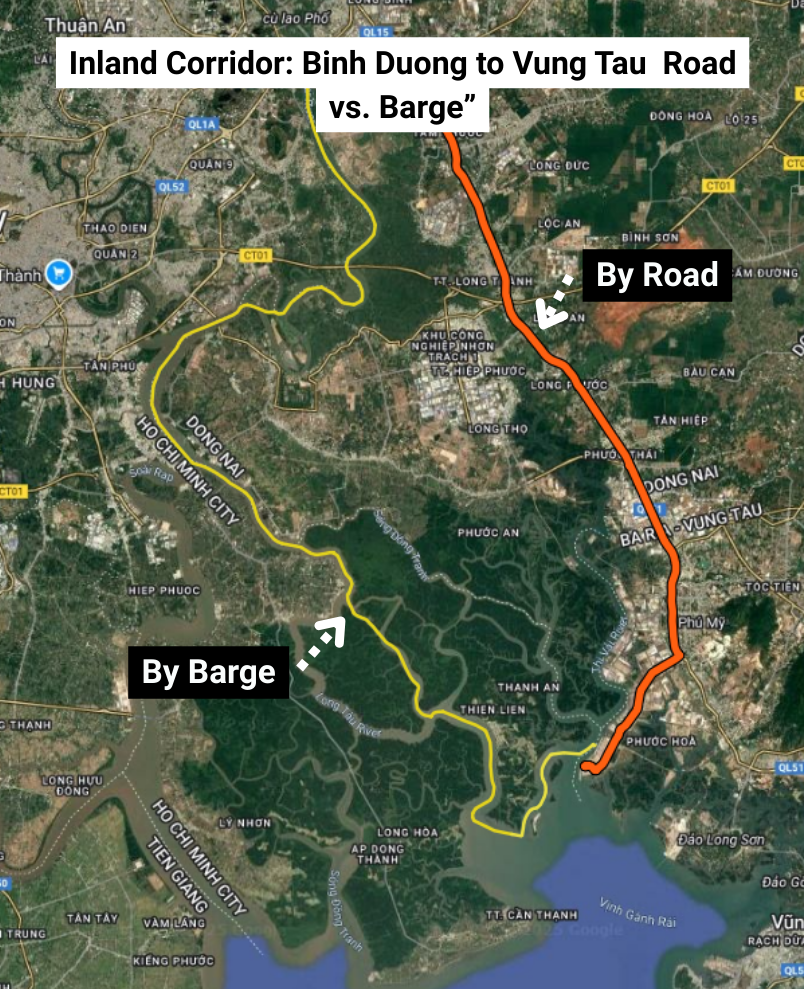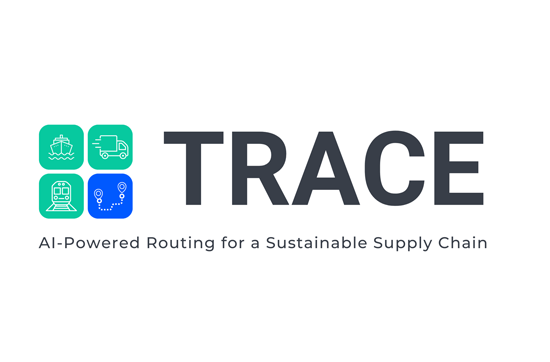As the logistics industry accelerates towards net-zero goals, inland transport remains a key missing link. Most emissions-reduction strategies focus on ocean freight, but without optimised connections between factories, ports, and distribution centres, the overall impact is limited.
TRACE, Greensee’s AI-powered inland route planning platform, is designed to close this gap. A recent movement involving Nike containers in Vietnam shows the potential of planning smarter, multimodal logistics.
The Corridor: Binh Duong to Vung Tau via Ho Chi Minh City

Nike’s supply chain in Vietnam connects inland hubs in Binh Duong with Gemalink Terminal in Vung Tau, a critical deep-sea export port. The movement spans 85.7 kilometres by inland waterway and 62.2 kilometres by road. Since 2025, the entire corridor has been operated under the consolidated governance of Saigon Port, resulting in improvements in customs, security, and visibility.
TRACE can support this type of movement. The platform enables logistics teams to simulate intermodal combinations, assess verified CO2e savings, and book execution through integrated 4PL providers. All outputs are export-ready for regulatory or corporate ESG reporting.
Why It Matters
Switching from diesel road transport to barge-led or hybrid transport can reduce CO2e emissions by up to 65%. TRACE uses ISO 14083-compliant models to estimate emissions across each segment of the route. Diesel trucks typically emit between 83 and 120 grams of CO2e per
tonne-kilometre. Diesel barges typically emit 4 to 5 times less, between 15 to 30 grams of CO2e per tonne-kilometre, and electric-powered barges, when powered by clean grid electricity, produce close to zero emissions. As brands increasingly prioritise Scope 3 emissions in their sustainability strategies, TRACE gives ports and 4PLs the ability to offer low-carbon alternatives backed by standardised data.
Beyond Emissions: Visibility and Actionability
TRACE provides more than carbon modelling. It delivers route-by-route intelligence, including distance, transit time, fuel source, and cost. This turns modal shift from an environmental aspiration into a commercially viable logistics decision.
With Vietnam expanding its barge fleet and digitising port checkpoints through electronic badges and automated access, the country is emerging as a scalable low-carbon logistics model for Southeast Asia.
The Takeaway
The Nike container corridor from Binh Duong to Vung Tau showcases the potential to integrate clean transportation with intelligent decision support. TRACE gives operators the tools to transition from guesswork to precision, resulting in faster, greener, and more accountable inland logistics.
Ports and shippers that adopt planning platforms like TRACE will not only meet rising ESG expectations but also gain a competitive advantage.
Explore TRACE
Visit www.greensee.ai or contact us to see how TRACE can support decarbonised logistics across Vietnam and Southeast Asia.

